
Story Activities for The Very Busy Spider by Eric Carle
Eric Carle is an American author and illustrator whose books have reached millions of families around the world. His colorful artwork and repetitive, simple text cause young children everywhere to say "read it again!"
The Very Busy Spider is a book about a spider's encounters with numerous farm animals. This book delights babies to young children with its animal sounds and repetitive text. Because of Carle's talent to engage young children, this book is a natural for teaching the foundations of literacy.
Here are some learning objectives taught within the context of this great story:
1. Shows interest in books: As you read, look for your child's interest in the story by looking, listening, pointing to pictures, smiling, and imitating animal sounds. To further devslop this skill, play with the story by role playing animal sounds. Use puppets or play animals to act out the story. In future readings, the child can make the animal sound as you read or tell what the animal wants to do.
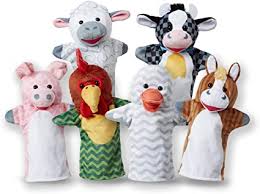
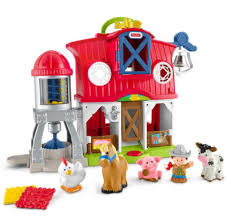
Play with Stick Puppets
2. Shows understanding of words and their meanings: Review vocabulary from the story. Use picture cards to match picture cards of animals to illustrations in the story.
You can play with the animals by doing a scavenger hunt with the animal pictures, hiding small toy animals or picture cards in a sensory box, or velcro the animal cards inside a board book of the story.
3. Asks and answers questions about the story: As you read, ask questions to check for comprehension and expand literacy knowledge. Target questions to individual areas of focus such as "who" or what" questions or inferring why each animal asked their question.
Consider each animal and what does he/she want to do?
Where are question cards for "who said" questions.
4. Sequence story details: As you reread a story, ask the student, what happens next? Use picture cards to sequence story details or sequence animals in the story.
5. Shows age-appropriate phonological awareness: Phonological awareness starts with listening and matching the rhythm, volume, and pitch of the repetitive text. As you read, change your voice for different characters (ie deep voice "Moo Moo" "Want to eat some grass?") As you reread, leave out some words for the child to complete helping them to distinguish individual words within a phrase.
Animal sounds are often easy to form (consonant-vowel) and fun to say. Use puppets or toys to play with the animal sounds.
Here are some activities to play with phonological awareness with the characters
6. More spider games and fun

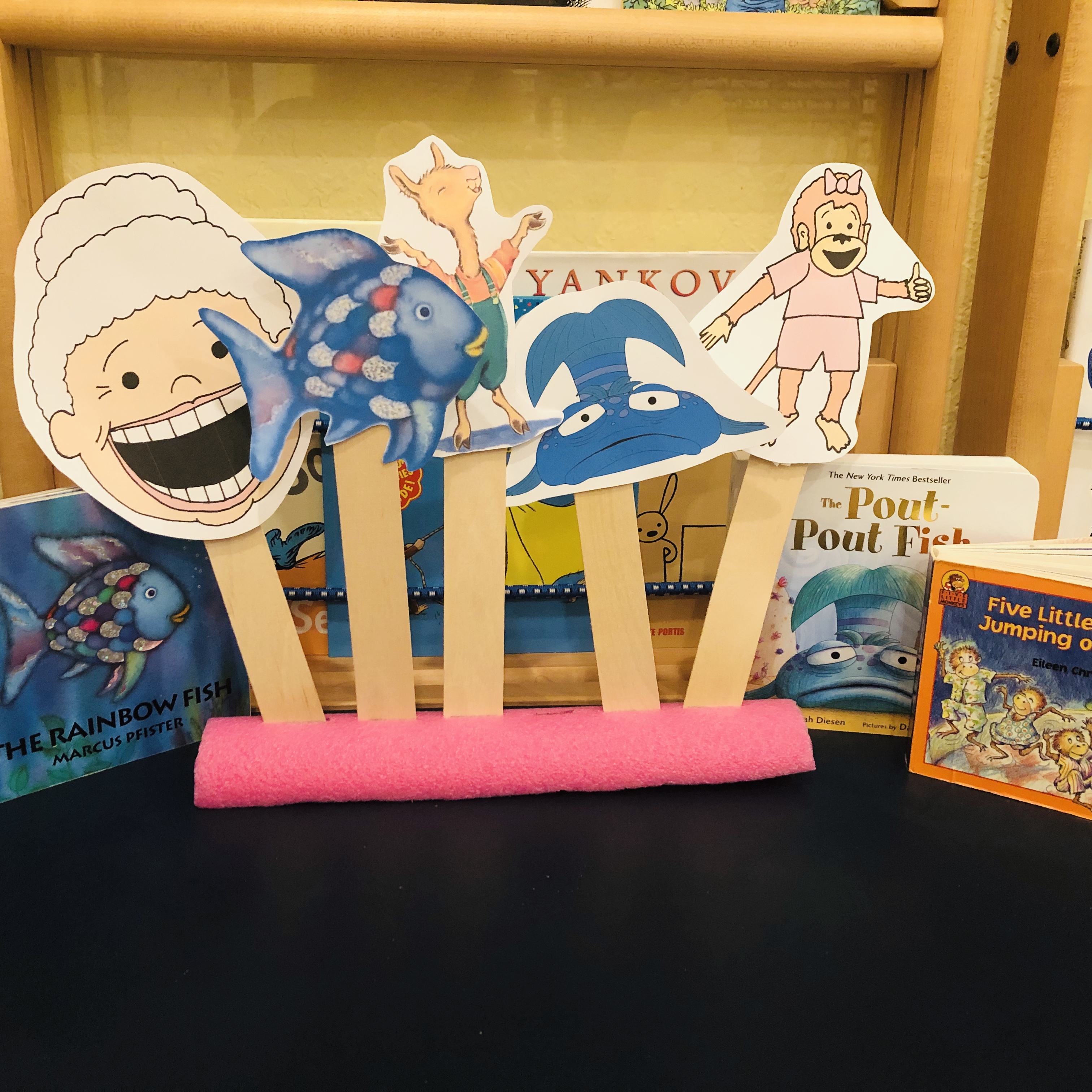

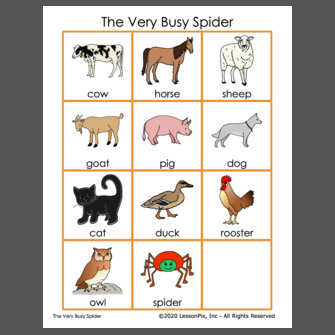
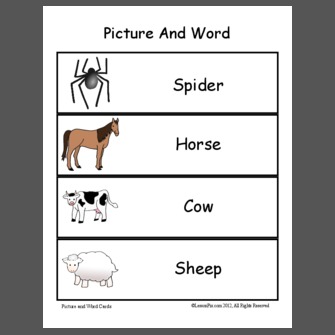



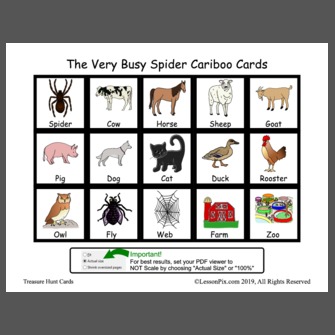
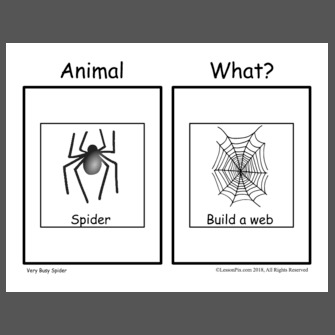

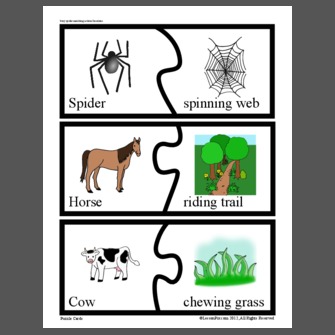
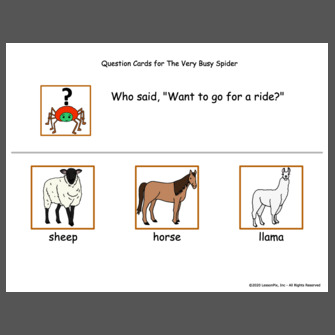
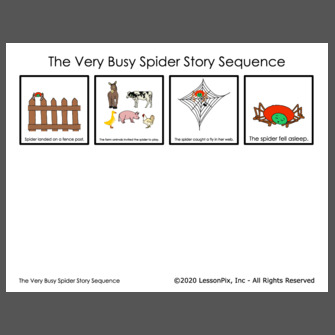
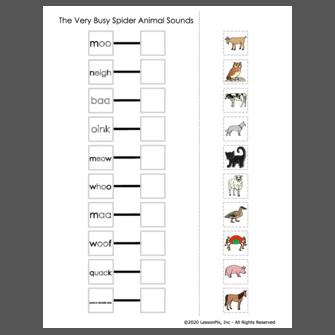
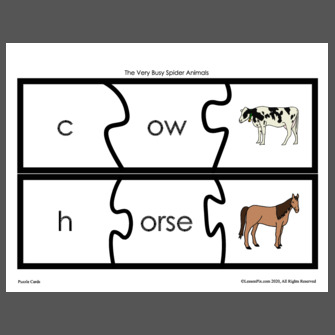

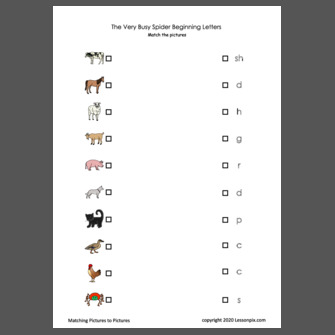
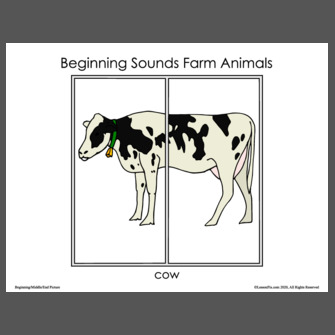
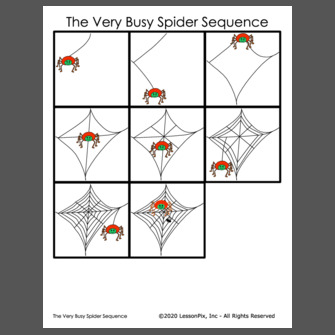
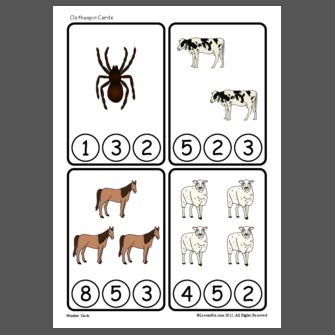
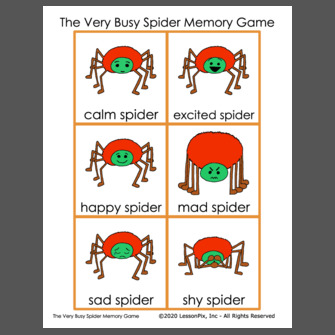
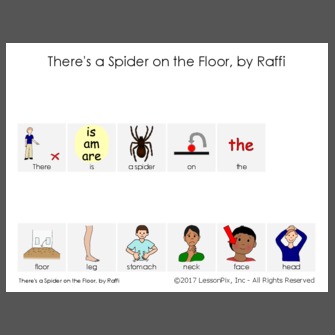
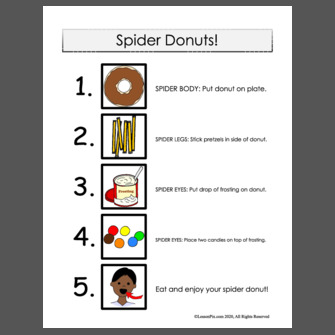
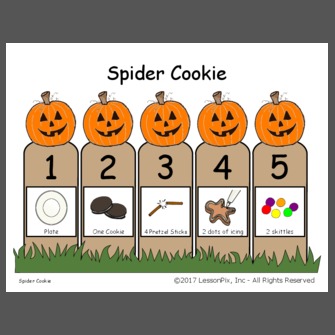
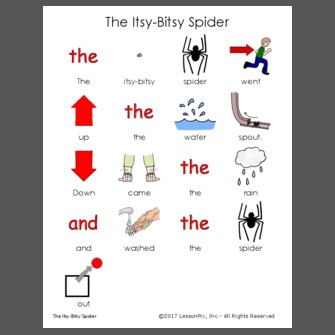
 Facebook
Facebook Twitter
Twitter Pinterest
Pinterest